View to the Sea
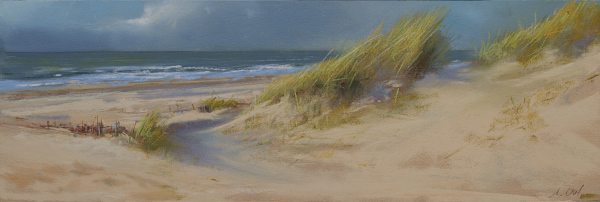
View to the Sea, 12×35,5 cm, 2012
© Astrid Volquardsen
Right now I would love to be at the sea but unfortunately this is not possible. Instead this pastel painting must fulfil my longing.

View to the Sea, 12×35,5 cm, 2012
© Astrid Volquardsen
Right now I would love to be at the sea but unfortunately this is not possible. Instead this pastel painting must fulfil my longing.
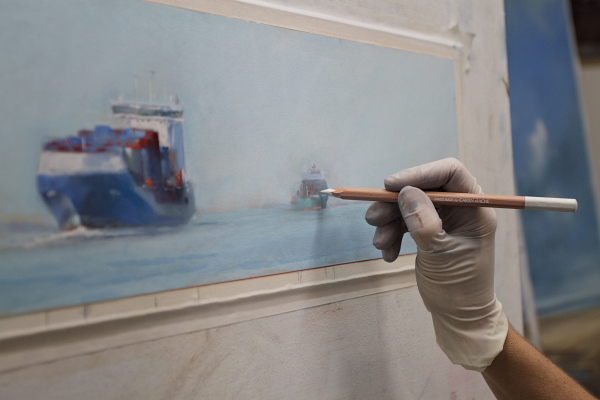
© Astrid Volquardsen
Pastel artists usually use different kind of brands because »the« pastel stick simply does not exist. Depending on the softness of the pastel stick and the type of paper or support being used there are a different ways of creating a wide range of markings. There is not simply one way of achieving this. Furthermore, the feel of the support surface is very important for the pastel artist because a combination of stick and paper is perceived differently depending on the individual artist.
At this point I would like to point out why I like the pastel pencils made by Caran d’Ache and why I think they are an excellent addition to any pastel artist’s assortment of materials.
I paint in a rather unconventional way and so the method I use is not exactly in line with traditional pastel techniques: I start off with very soft pastels and then add hard ones on top. When using standard pastel pencils I had difficulty applying the colour for the final details because they did not release enough pigment and the mark just seemed to disappear. This, however, is different with the pastel pencils produced by Caran d’Ache and I was really surprised at how they have gained such a permanent place in my assortment. I like to use them when adding the final touches to my paintings, for example, in the harbour series or in my sketches of life drawings.
What I like about the pastel pencils:
The pastel pencils go together with the pastel cubes. The cubes and pencils have the same consistency and exactly the same colour range. The cubes come in a square format and range towards the hard end compared with soft pastels. Pastel artist Susanne Mull also works with pastels from different manufacturers and likes to use hard pastels. I have not used the cubes as much yet so I asked her for an additional opinion.
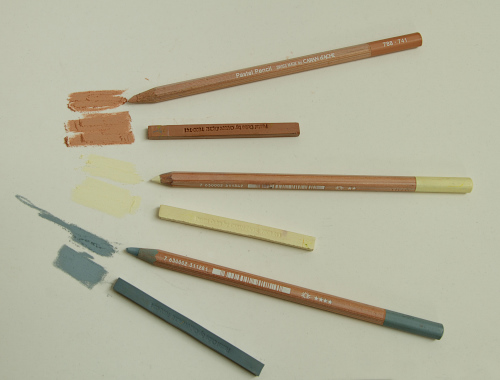
© Astrid Volquardsen
Susanne Mull is impressed with the colour range offered. The assortment not only has a large number of graded colours but it also offers sufficient full chroma colours. Apart from three cubes which appear harder, there is only a slight variation in hardness. She works from hard to soft pastels and likes the way in which the pigment load releases easily onto the support and how she is able to work in layers and use soft pastels on top of them.
The cubes and pencils are being released in April 2012 and can be obtained in
France: www.magasinsennelier.com
Germany: via the website www.boesner.com or at various branches of boesner
Switzerland: www.gerstaecker.ch
Amerika: Dakota Pastels
I made some samples on different kind of supports as follows:
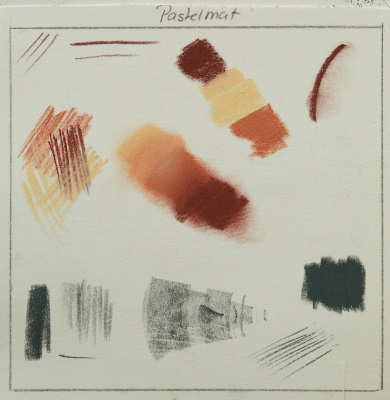
© Astrid Volquardsen
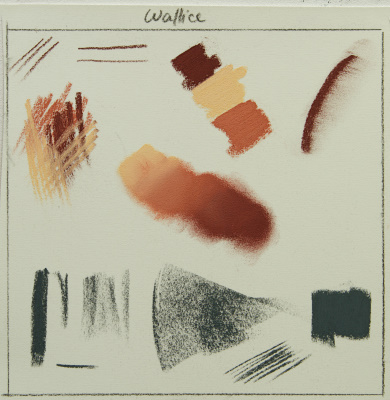
© Astrid Volquardsen
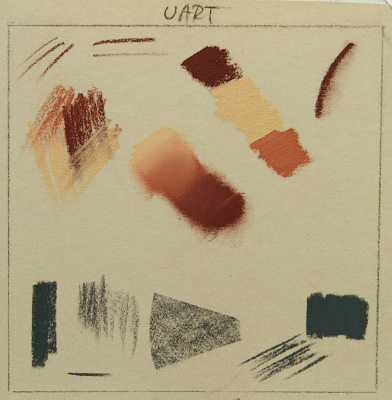
© Astrid Volquardsen
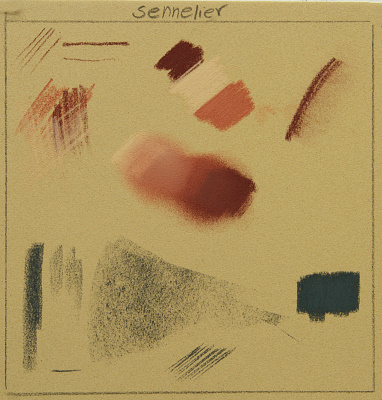
© Astrid Volquardsen
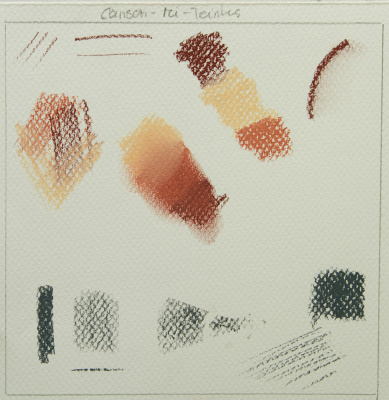
© Astrid Volquardsen

Winter Evening (II), 27 x 100cm, Pastel
© Astrid Volquardsen, 2012
Before spring will finally arrive here is the last winter painting for this season. It is always a great pleasure to watch the big ships arrive at Hamburg harbour in the winter evening.
On my homepage you can see the painting as a larger image.
During my last two workshops I could see the wish in many eyes to draw perfectly, but something kept my students from even trying to sketch. Most of the time it’s fear of failure. During sketching very often the dominant left side of the brain constantly comments with words like »Oh I can’t do that, it looks wrong, it’s bad, I am never going to learn this… (Sound familiar?)«
Well, a sketch is not about the perfect drawing but about being a vehicle for exploration and understanding, a way to learn to »see« the world and not just look at it. Degas already knew that there is no beauty in absolute perfection.
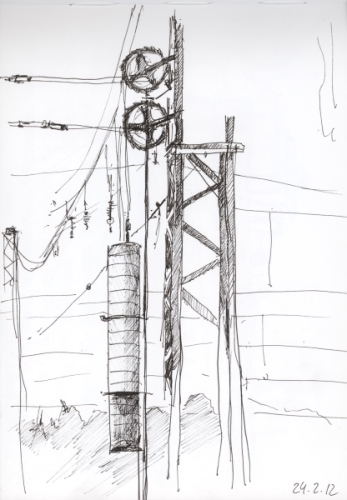 Sketchbook, 14×20 cm, 2012
Sketchbook, 14×20 cm, 2012
© Astrid Volquardsen
Jonathan Ive from Apple said in an interview: »What I enjoy about being here is there is a remarkable optimism, and an attitude to try out and explore ideas without the fear of failure. … It is so important to be light on your feet, inquisitive and interested in being wrong.«
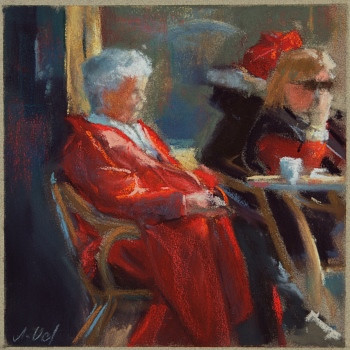 Red Coat , 5 x 5 inch, Pastel
Red Coat , 5 x 5 inch, Pastel
© Astrid Volquardsen, 2012
sold
In spring with the first glimpses of sun people love to sit in the street cafes.
Last year I received an enquiry from the Swiss company Caran d’Ache who asked me if I would like to test a few prototypes of their new pastel pencils. As a result of this contact, we established an interesting working relationship which took me to Geneva to the main office and production site with my fellow painter Susanne Mull.
As I already mentioned in my blog entry about pigments, the production of art materials is a very complex process. After having spoken to the employees I realize how much work, enthusiasm and dedication are needed to start a new production line and put it on the market. I really admire the chemists and production workers with their outstanding expertise, wealth of experience and specialist knowledge! And I was also deeply impressed by the seemingly endless amount of experimentation that goes into achieving the precise level of consistency for the pastel pencils.
Although we visited most of the production site, I would like to concentrate on the new pastel pencils which are really interesting.
Due to their molecular structure, pigments have different particle sizes. From the manufacturer’s point of view, this means that you cannot simply choose 70 pigments, mix them together with a binder and put them through the production process. Each pigment reacts in a different way and every pencil has its own specific formula and composition. This has to be found for each individual pastel pencil so that it meets various requirements, such as light-fastness, consistency, range of colour combination, the satisfaction and demands of the user as well as the price, just to name a few. In addition, not every pigment is suitable for the production process because the lead is very sensitive and can easily break. I think, in future, I will probably see the shelves of all manufacturers of artists’ materials in a completely different light.
First of all, the dry pigment mixture is spun in a machine (a bit like a tumble dryer ) until the pigment particles are refined as finely as possible so that the pigment structure is not destroyed.
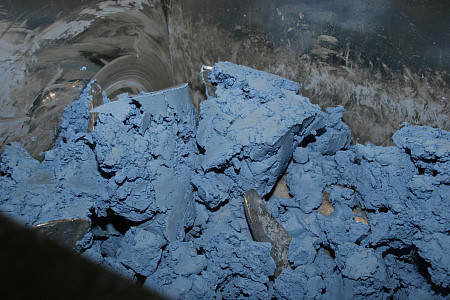
© Astrid Volquardsen, 2011
Binder and distilled water are added and slowly kneaded until it is like dough. The dough is pressed into a cylinder with a capacity of approximately 15 kg and it is then processed during the next stage to make the actual pastel leads.
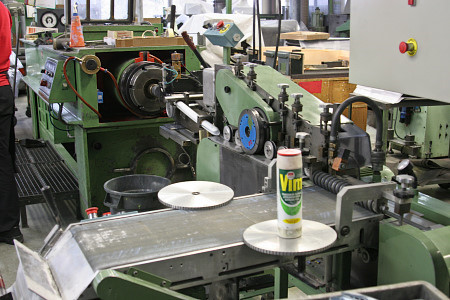
© Astrid Volquardsen, 2011
Unfortunately, the machine was not in operation at the time. Two employees are always necessary to make the pastel pencils because the leads tend to break easily. One person makes sure that the leads are carefully fed through, while the second person places them in a receptacle ready for the next step.
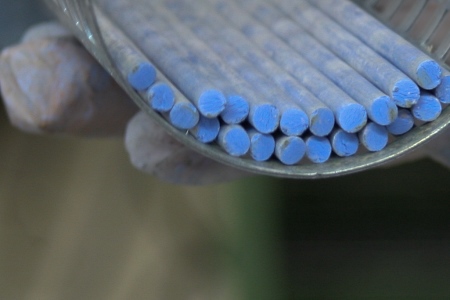
© Astrid Volquardsen, 2011
Since the pastel leads are so sensitive, only a few are stored in the receptacle and placed in a special furnace for hardening. Here, they are heated up only slightly because some pigments tend to »oxidise« at certain temperatures and would therefore undergo a change in appearance. During this process the leads are turned so that they come out straight, round and slightly hardened.
The art of making pastel pencils is to find precisely the right balance of pigment and binder with the aim of using just a sufficient level of binder to achieve the characteristics of a pastel stick but as much as is necessary to prevent the leads from breaking.
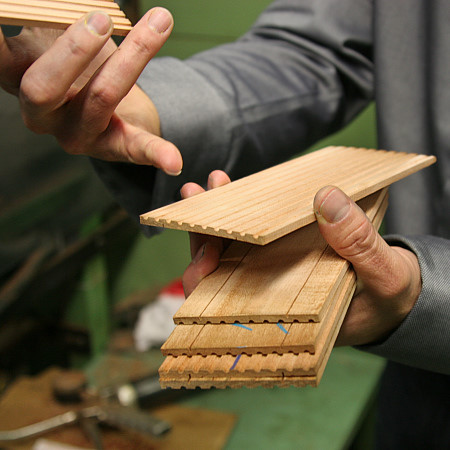
© Astrid Volquardsen, 2011
Throughout the production process particular care is taken that all leads are even and show no signs of damage or cracks. Any damaged pencils are rejected immediately. For the next step it is essential that all leads are homogeneous so that they fit in the grooves of a wooden board. The following steps take place in an automated process: insertion, lining up, affixing another wooden panel and cutting into individual pencils.
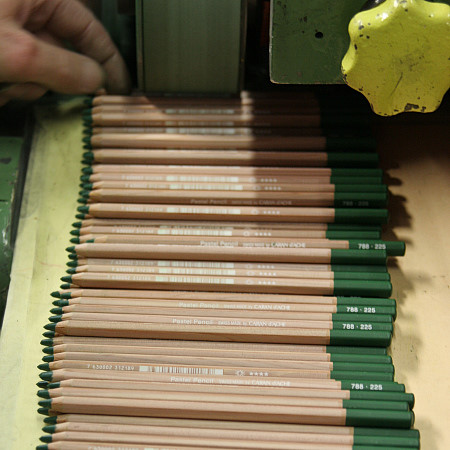
© Astrid Volquardsen, 2011
At first glance, the next step does not look very spectacular: this is when the pastel pencils are sharpened. I was surprised to see how much work went into this stage of the process before it actually takes place. By performing a few clever actions as effectively and as carefully as possible, a sharpening method is found and the machine adjusted accordingly. I was also impressed by the degree of dedication and precision with which the operators worked on the machines.
And, I hasten to add, not just on this one machine! All the machines in this factory are unique and adapted to these special production processes. The staff were extremely friendly and cooperative; they explained the different procedures, willing showed us their work, answered all our questions and were pleased to see our amazement.
Finally, the pencils are dipped in an immersion bath and the coloured markings and number of the colour are added to on the end piece. Up until then I had never considered how much time and effort goes into such a product. The colour of the end piece has to correspond to the actual colour of the pigment. That’s easy, or so we would think. The available pigment mixture has to be combined with the corresponding binder specially for coating varnishes and the chemists are kept busy finding out the right compatibilities which need to match the different chemical components in the varnishes.
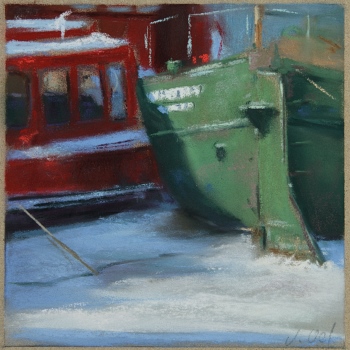 Winterrest (II) – study, 5×5 inch, Pastel
Winterrest (II) – study, 5×5 inch, Pastel
© Astrid Volquardsen, 2012
sold
Two weeks ago the ships were in from grip of the ice. Now that the Siberian cold front is gone the ships are set free. I was especially fascinated by the shadows on the ice and on the ships.
Next time I will tell you more about my visit to Caran d’Aches pastel pencil production in Geneva.